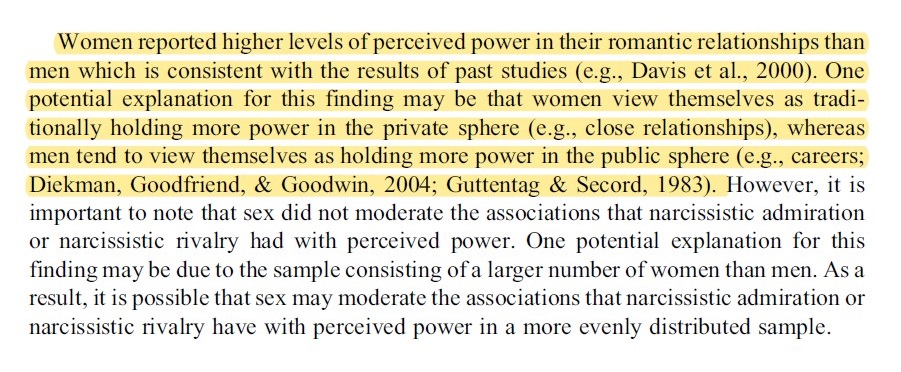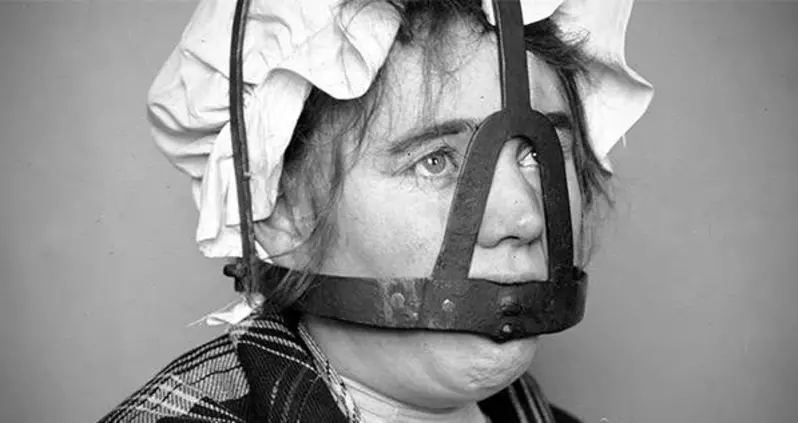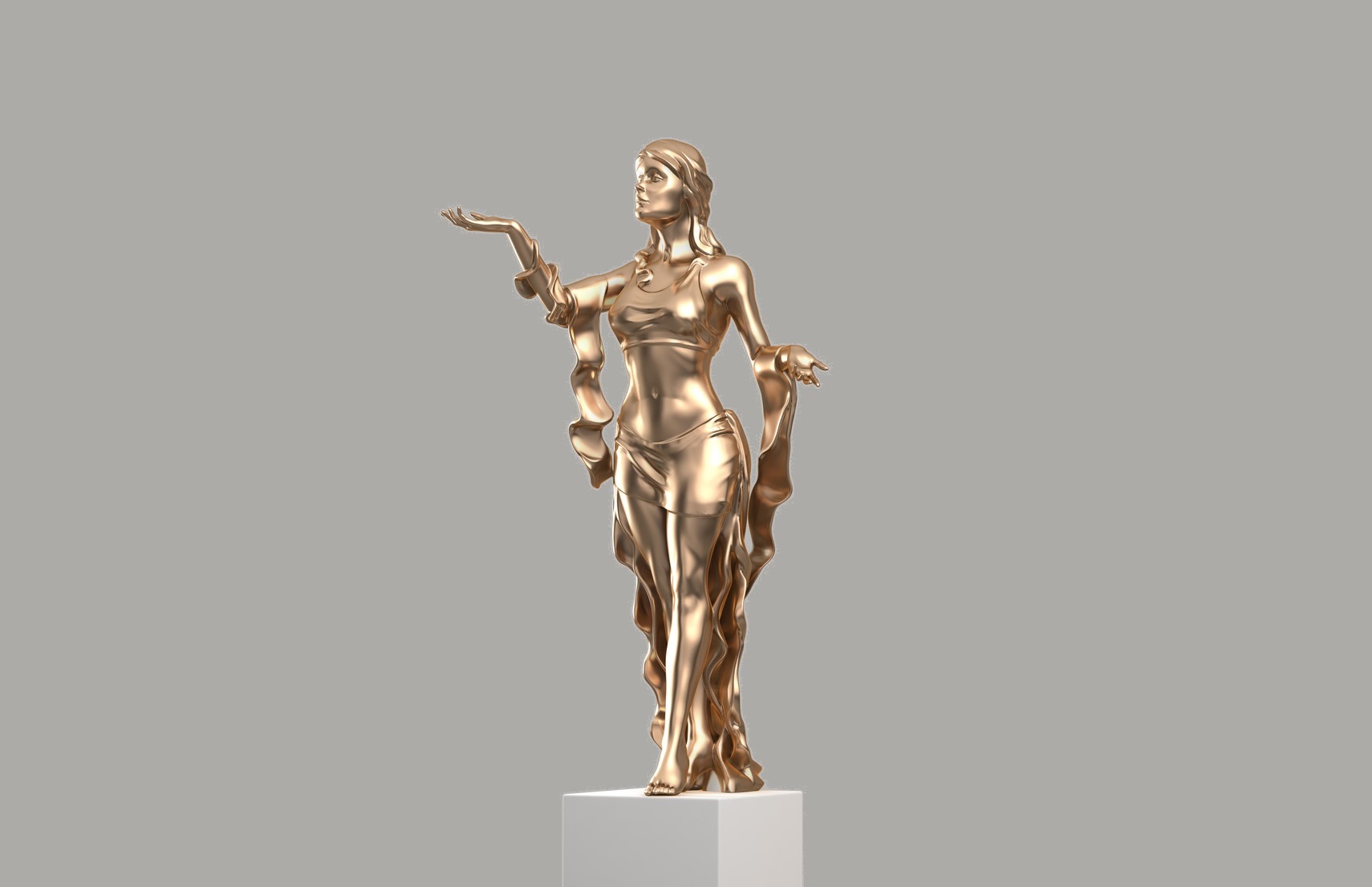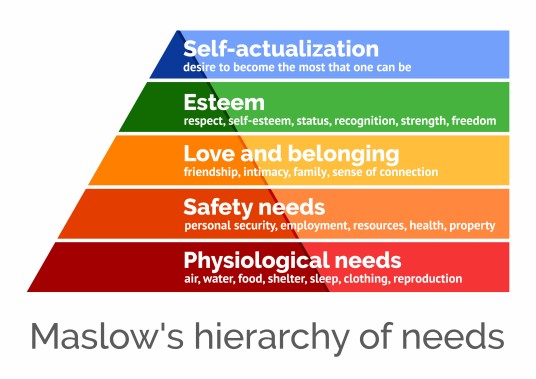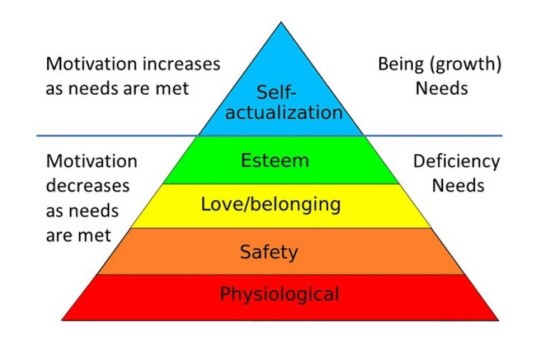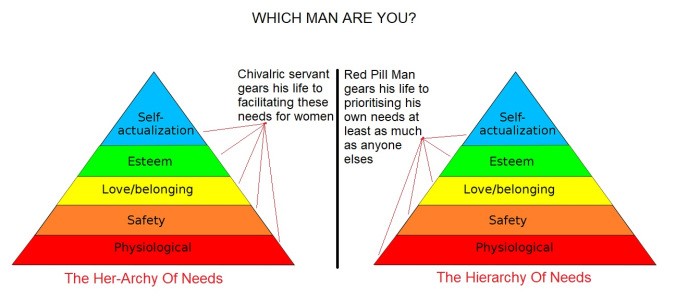
The Fifth Horseman
“Never Go Full Retard”– From the movie Tropic Thunder
When we discuss the apocalypse we sometimes refer to The Four Horsemen- Death, War, Famine and Plague. We have two of those right now, but is there one missing from that list? Is there a fifth horsemen we can add? I think there is. I would call it madness. The world has gone mad. Our world is now led to a significant extent by crazy people with crazy ideas. We call it clown world and as we can see with the toilet paper, madness does reign in 2020. Madness brings chaos and chaos brings the fall of society. There is no greater example of madness in modern society, than woke culture and identity politics. This has become the subject of Douglas Murray’s book, The Madness Of Crowds1. We are at a critical juncture in history and what is going on needs to be thoroughly examined and addressed. The first thing we have to acknowledge with madness, is that madness is never supposed to make any sense. Do not go looking for rational and sane causes for irrationality and insanity.
Madness has nothing do with reason and exists in the absence of reason. Year after year attempts have been made to use reason to cure the far-left ideological madness in society. This will never work, just ask the violent mob that divisive identity politics nurtures. All of these intellectual critiques of woke culture and identity politics will fail to bring about their downfall. Appealing to reason to challenge woke culture, is like trying to fight a fire with straw. It is the freedom from the consequences of irrational and pathological ideas and beliefs, that has resulted in the proliferation of madness in our society. When academics can espouse madness in our institutions for decades and when bureaucrats can introduce absurd policies with impunity and there is no accountability for the results of their ideology, madness will grow in society and that is exactly what has happened. Appealing to reason with people, requires that they be open to examining their own beliefs and questioning them. This will only occur when people bear the costs of their own beliefs and cannot push them onto society for their benefit and at our expense.
Unchecked power corrupts and the people promoting the madness we are witnessing in modern society are doing so from privileged positions and with impunity. There are no consequences for these people and no costs they incur from their own ideology, so why should they care about whether their ideology has a positive or negative effect on society? This is the key mechanism of how madness proliferates in society- Lack of accountability for beliefs and ideas. Gynocentrism2 is a bad set of beliefs and ideas that gains traction in a society that permits madness to proliferate. It is certainly not the only set of bad ideas that thrives in madness, but it is definitely a prime example of one of them.
The peace, freedoms and prosperity we have enjoyed for decades after World War Two as a result of massive technological and social change, has resulted in a relaxation of our vigilance to weed out bad ideas and beliefs. We have dropped our guard as a society and have failed to hold people accountable for promoting bad ideas and beliefs. This is because we have become less concerned with our own survival and have lost our sense of the danger madness represents and the threat it poses to society. Don’t get me wrong, people should have the freedom to say what they like, no matter how stupid or wrong they may be. However I do think people should not be free of accountability for what they promote and implement from positions of authority in the mainstream media, academia, the boardroom, the legal system and in politics etc. Too often woke culture, identity politics and the Marxist far-left, gets a free pass for the results of their ideas and policies whilst holding privileged positions of authority and are kept in a protective bubble free from accountability. That has to change and to change things we have to diagnose what is going on. We have to be able to identify the factors that are driving the madness in society and fuelling the growth of sets of pathological ideas like gynocentrism, if we want to identify the madness in our society and then hold people accountable for promoting it.
The Forces Of Madness
There are eight core social factors or forces that need to be discussed in explaining the power of the current societal madness we are experiencing and that drive the growth in the madness we have observed. Every single one of these eight social forces also drives gynocentrism and the pathological aspects of our culture that are like it. The power of gynocentrism is not all about just sex and neoteny, there is more to it than that. Although these social forces exist independently of gynocentrism, we have to discuss them to properly understand the power behind gynocentrism and what drives it. So what are these eight forces that drive gynocentrism and the growth of madness in society? They are as follows:
Lack of accountability for beliefs and ideas– I have already discussed this and it is the most important force of the eight that I will identify and describe. When people get into academia, into teaching, into the media, into politics, onto boards, into management, into our legal system and into policy, they have to be held accountable for the beliefs and ideas they promote and implement. An elite class has emerged over the last fifty years that appears to be beyond accountability for the ideas and beliefs they push onto society. The consequences of their ideas and their beliefs are never felt by these people and they are never confronted and held to account for them. These elites are the “establishment”. These are the people that consider themselves our moral superiors and live in an echo chamber and a protective bubble where they can virtue signal with impunity and chastise the unwashed masses in society that won’t comply with the ideology they promote. This elite also makes certain to censor any dissenting opinion and “cancel” or ostracise anyone offering a view that runs counter to their narrative. For decades this elite have indoctrinated society through their control of the education system and our media to hold distorted, dangerous and damaging ideas and beliefs. There has been no major resistance or accountability for this indoctrination whatsoever.
Blind faith in authority– People will follow what they perceive to be official and authoritative, even when the information or opinions presented are clearly ridiculous or nonsensical. When people are afraid, angry, uncertain or emotionally invested in a certain belief system, they will turn to authoritative figures and movements to solve problems. If the mainstream media says it, then it must be true. That’s the thinking that embodies what I am describing here. It is the thinking one finds in cults and when such thinking becomes mainstream in society, it is devastating. There is a substantial amount of society who will believe what they are told regardless as to what it is, provided it comes from a position of perceived authority. The genocides instigated by the Nazi party and religious extremism, are horrific examples of what blind faith in authority can lead to and how powerful it is.
Herd mentality– People will go along with what other people think and do, simply to fit in and belong. People are also to some degree cognitive misers. People will think as little as possible in certain circumstances, if they feel they have no incentive to think with any effort. When thinking independently is not perceived to be useful or worth the effort, people will follow what other people think and follow whatever social trend is popular. That is one example of herd mentality- Following the group simply because it involves less effort. Herd mentality is why we have no supermarkets with toilet paper in a pandemic caused by a primarily respiratory virus! Human behaviour does not require logic when herd mentality takes over. Herd mentality fosters groupthink and strict social policing to enforce conformity on the group. Herd mentality does not allow any dissent from collective insanity, delusion and hysteria and thus becomes incredibly dangerous when it grows to a certain level and starts impacting political and economic decisions with long term implications.
Tribalism– When group identity becomes the predominant theme in society, then everything begins to revolve around group identity. People are judged not by what they say and do, but what identity they belong to. We called it discrimination in the past, but apparently discrimination is now equality. When group identity becomes the primary value system of society, expect hypocrisy and double standards to become the new normal. It eventually becomes impossible under such conditions to have meaningful discussions on anything and address societal problems. I don’t think I have to explain in detail how obsessed our society and institutions etc are with group identity at the moment. Tribalism paralyses society and prevents us from properly functioning. Eventually it fractures society and leads to mass violence. We have already had a taste this year in 2020, of what to expect if this tribalistic “us” versus “them” mentality is allowed continue unchallenged.
Surface Thinking– People will skim the surface of a subject based on the information immediately and easily available to them and form snap judgements. Little analysis or scrutiny will be done of the information people are exposed to. Information is just absorbed and repeated in such circumstances. This is a further example of being a cognitive miser. Thinking is hard. There are a lot of lazy people in our decadent society and these lazy people form lazy half-baked opinions about ideas they have not even properly bothered to examine. We know all about surface thinking in the manosphere. How many times does the gender wage gap need to be debunked? How many times?
Surface thinking is why the media can so easily manipulate the beliefs of society about particular issues. How many people bother these days to scrutinise the information they are presented with, or research a topic beyond the information directly disseminated to them, before they form a strong opinion on something? Quite often the goldfish attention span of modern society drives surface thinking. If you can’t explain something to someone in one minute, then they do not wish to know of it. That’s the mentality of a surface thinker. Thinking requires effort and sadly it seems many people lack either the attention span or the motivation to examine things in any detail. Surface thinking is exemplified by the massive void in society of any deep level of intellectual curiosity that extends beyond the frontiers of current knowledge and a lack of motivation to explore the unknown.
Short Term Thinking– We are the society of the short-termers. Short term thinking is evident in sayings like, “She’ll be right”, “I will be dead by then” and “Not my problem”. This type of mentality has become pretty widespread in society. Well I got some news- She won’t be right, you won’t be dead by then and it will be your problem. COVID-19 has put the spanner in the world of the short-termers and suddenly people need to start thinking long term again. Suddenly people are starting to recognise for instance, that saving money, having an emergency cash reserve and not getting into high levels of unsustainable debt, is a good idea.
It is truly incredible how little thought has been given from the top of our society and all the way down to the general public, on our long term future. For decades there has been an apathetic attitude toward the future from the public and also from our leaders. There has been far too little consideration of the long term implications and consequences of decisions made in the present and little responsibility or accountability demonstrated for those decisions. This is particularly the case with our politicians. Just look at the mushrooming levels of government debt we have accumulated over recent decades and continue to accumulate, with no regard from our politicians on how that debt will be paid back or its effect on future generations. Woke culture and identity politics have thrived in the absence of any long term thinking. Frankly it remains to be seen whether COVID-19 will result in any substantial shift in the mentality of society to plan long term and think of the future. Due to this apathy, we have a society of people that will not address reality until it comes crashing into their lives in a major way, like it just has with COVID-19. In the end reality asserts itself.
Reductionism– People will reduce complex information down to simple categories and single causes. There is no recognition of the wider system or the multifactorial nature of a problem or issue and no consideration for the nuance and detail of a subject. This is how we got the current polarised society we now live in. Our media, our political system and our academic institutions, are now filled with arrogant ideological fools that reduce every single matter down to a left wing or right wing issue or down to identity politics. There is no room for any proper intellectual and thoughtful discussion of any issue of significance in public discourse because of this. That is a big problem and we need to address it as a society.
Emotional Thinking– People will let emotions direct their thinking to some degree and this has become much more the case over the last 50 years. Emotional thinking is especially prevalent when people are afraid, angry and have spent decades being indoctrinated into an ideology they are emotionally attached to and that has been promoted with impunity for decades in our institutions. People have an emotionally invested position on certain topics and can consequently be very resistant and hostile to hearing alternative points of view on those topics. You know you have started discussing a topic of this nature, when the people around you suddenly go from 0 to 100 on an emotional scale. This where the safe space and trigger word bullshit comes from. It is also a key reason gynocentrism is so hard to challenge with reason and with facts. Gynocentrism is saturated in emotional thinking. For many of the emotionally challenged on the left side of the political spectrum, merely offering a different opinion now automatically makes you a Nazi. Emotional thinking leads to a reductionist and highly polarised way of thinking.
People have emotional biases and the extent to which they let their emotions bound their thinking, is the extent to which they become wilfully ignorant and intolerant of dissenting opinions. Reality does not care about emotions and sooner or later reality inevitably asserts itself for these people. Unfortunately it is usually only after much destruction, that emotionally charged thinking finally gives way to reason. People who let their emotions drive their thinking, believe in fantasy over reality. It is not the rejection of facts that is the problem with emotional thinking, it is the selective filtering of facts. Such people absorb emotionally appealing information and filter out information that does not conform to their beliefs or ideas that they hold an emotional investment in. We call this confirmation bias.
The role of fatherlessness in creating a society of emotional thinkers is worth mentioning. Fathers have played a key role in socialising children into rational and responsible adults that develop beyond emotional thinking. The absence of fathers has created generations of people that have a stunted psychological development and this is now showing with the new generations of young adults. This what our future looks like, when we remove fathers from children- A society of madness and of chaos.
These eight forces are rife in our society at the moment. They are not only observable with the general public, we can also see them at work within our own governments, corporate sector, academic institutions and especially from our mainstream media and politicians. These forces drive mobs to burn buildings, destroy and vandalise statues and property, assault innocent people, take over city blocks and call it all progressive justice. They are also the same forces that drive mobs of people to buy toilet paper and to behave and think like complete idiots in a pandemic. The level of idiocy has been almost unbearable for me to watch this year. We really have reached new heights of mass stupidity in 2020. Emotion and particularly fear and anger, are at a multidecade high. All that the media is doing is just fanning the flames and they are doing it deliberately for their own agenda and the agenda of their owners. More on that later.
Do We Deserve What We Have?
If people really are this stupid then perhaps society should collapse. Do we really deserve what we have inherited from past generations when we react so emotionally and without reason, as we have done in 2020? It is a question now worth asking. What I am talking about can be illustrated with the example of COVID-19 and our reaction to it. How would people that lived during the Spanish Flu, World War One and Two and the Great Depression react to COVID-19? Would they have locked down their entire society to the same degree as we have, or would they have made smarter and harder decisions? There was a toughness to earlier generations, that frankly our modern society lacks. They accepted far greater levels of mortality and continued to run their economies and keep their societies open to at least some degree, even when bombs were literally raining down on their cities.
Even during the Spanish flu when at least 17 million people died (Many estimates are much higher than that) and the world population was much less than it is today, countries put in place some restrictions, but they did not go to the same extremes as what we are witnessing today all over the world in responding to COVID-19. COVID-19 as of July 2020, has not even caused 5% of the deaths observed from the Spanish flu (Based on the conservative estimate of 17 million deaths from Spanish flu) and we have a far larger world population today than during the Spanish flu pandemic. Of course we need to take COVID-19 seriously, but we also need to have some perspective and keep things in proportion and recognise we have had far worse pandemics historically (Like the Black Death which killed between a third to one half of Europe). We seem to lack in modern society, a readiness to make hard decisions and accept hard realities. We have become soft. There will likely be a second, a third and a fourth wave of this virus and more waves after that until there is a vaccine or the pandemic has run its course. Sooner or later we are going to have to choose between keeping society locked down to save lives, versus the very real prospect of a great depression or even the complete collapse of our national economies from a protracted lockdown and all of the death that will result from that.
Aside from toughness, there was also an intelligence and rationality to the decisions of our leaders during the numerous difficult periods of the early 20th century. This intelligence and rationality seem absent today. We have known the age profile and the health profile of those that are hospitalised and die from COVID-19 since April of this year. We know the majority of those that are infected and are then hospitalised or die, are elderly and/or suffer some kind of health condition (obesity, diabetes, hypertension, heart disease and lung disease often from smoking etc). We know that the majority of healthy people that are under 60 years of age with no health condition and get infected with COVID-19, will not die or be hospitalised. A substantial number of these people may not even have any symptoms or will be mildly sick. This is not conjecture, these are facts that anyone can check up on. We have had this same pattern confirmed multiple times across the world and have now had time to prepare our hospitals. We now have the knowledge of COVID-19 and the public health capacity, to be more targeted in our measures to react to the pandemic. Despite these realities, we continue to live in fear whipped up by the media and continue to lock all of society down and risk the possibility of another major depression or even socioeconomic collapse.
Sooner or later we will have to confront our thinking on what we are doing, because the long-term consequences of the lockdowns will begin unfolding in major ways. Remember this lockdown was meant to give our hospitals time to prepare and not to eradicate the virus (which is what the media and political narrative has now morphed into). A lockdown will never eradicate this virus. It is also not a socially or economically sustainable long-term solution to the pandemic, to lock down society every single time there is a “wave” of the virus. This is a hard reality that sooner or later we will have to confront.
Interestingly none of the fear of the virus we now seem to again be consumed by and none of the lockdown restrictions seemed to matter, when we had violent mass protests a month ago all over the world during a pandemic, because of the unjust and tragic death of a single individual in one country. What does that stark contrast say about the intelligence and emotional state of modern society? It is complete nonsensical madness! How much of this reaction to COVID-19 is just emotional hysteria whipped up by the media and our politicians, which they ramp up and down with news cycles to suit their agenda? No one seemed to care about social distancing during the protests and our collective fear and concern only seems to arise when we are told to be fearful by our media and politicians. What does our reaction to COVID-19 say about our current society in comparison to past society? I think it speaks volumes on how regressed society has become intellectually and culturally. In many ways we have made intellectual and cultural progress as a society in comparison to the past, but in other respects we have gone in the exact opposite direction and regressed, or have not met the standards we claim to have reached.
I am not suggesting we be cavalier with COVID-19 and the risks it presents, but we need to be tougher, less emotional and more intelligent in how we are reacting to it. A more targeted approach to managing the risk that COVID-19 represents based on considering the age and health profile of those most at risk, seems far more sensible than repeatedly locking down all of society when there is inevitably another wave of the virus. We could put in measures to isolate and properly support those most at risk, along with positive cases, overseas travellers and medical and aged care staff. We could reopen the rest of society and still encourage social distancing where possible and preventative measures like wearing masks and washing hands when people are out and about during the pandemic. Yes that does mean more cases, but not a huge spike in hospitalisations and deaths.
There are reports that some people with mild or asymptomatic cases of COVID-19 can exhibit signs of tissue damage with their organs. However there is a view this damage may not be permanent in some instances and may just be temporary damage that the body will repair. This is concerning of course and I am certainly not saying healthy people under 60, should have a carefree attitude toward the virus. Social distancing, washing hands, wearing masks and proper hygiene, are all very important measures that should be encouraged. Everyone should take precautions, because the virus is dangerous. However, it is a reality that the degree of danger is heavily skewed towards the elderly and those with certain health conditions. They are the majority of people filling our hospital beds and dying from the virus.
It is also a reality that going to the extent of locking down society for more than a few months and/or having multiple mass lockdowns, is also dangerous to public health. Protracted or repeated lockdowns do cost lives. This is about managing risks and consequences and making hard decisions. In the short-term with many unknowns, it could be argued that a lockdown was justifiable, so that we had time to prepare and also evaluate the threat of the virus. In the long-term a protracted lockdown or repeated lockdowns becomes less and less tenable as a strategy, because of the increasing cost to human lives and public health from the lockdown itself. There is a threshold where lockdown measures cost more lives and have a greater negative impact on public health than the actual virus and other risk mitigation strategies have to be considered instead. This is what people with a reductionist mindset swimming in fear of the virus cannot perceive, because they can only focus on the danger of the virus and the deaths directly from the virus. A perpetual lockdown is not a tenable long term option and sooner or later it has to end.
If people want to criticise my opinion on COVID-19 I am perfectly fine with that, as long as such criticism is well thought through. Please consider the facts before you form judgements on an issue that will determine the very social and economic future of our countries for the next 20-30 years. That is how big of a footprint the lockdowns will leave on society. I would also encourage people to watch these discussions with Nobel Laureate Prof. Michael Levitt3, distinguished physician Dr. Scott Atlas4 and former UK Supreme Court Justice Lord Sumption5, before they reactively form a view from listening to our mainstream media, that locking all of society down (sometimes on multiple occasions) for a protracted and often uncertain period of time, is the only way to react to this virus.
Also ask yourself these questions- How many times can we keep locking society down with every new wave of the virus, before we no longer have the economy and the money to support our health systems beyond 2020? What resources will we have available for the next pandemic or for future waves of this virus, if we destroy our economies? How many lives will be lost from suicide, addictions/overdoses, intimate partner violence, stress induced heart disease and cancer and from failing to seek medical care to diagnose and treat other life threatening conditions (Other than COVID-19, like preventing the diagnosis of cancer or heart disease at an early stage) etcetera from the lockdowns? How much is overall health and life expectancy going to be reduced from livelihoods being destroyed because of the lockdowns? These lockdowns are not harmless to public health. There are costly limits to the effectiveness of locking society down over a protracted period of time or doing so repeatedly.
It takes a certain level of responsibility, a strong intellect, moral discipline, emotional toughness and resilience, to ensure the continuation of our modern civilisation. Frankly I see very little of any of these attributes reflected in our leaders or from the general population at the moment. Past generations built society by putting reason and accountability before feelings. Our society is not even close to where past generations were in this regard. It may seem cold, but being overly emotional on important issues like a pandemic is dangerous and can be more dangerous than the actual virus itself. You don’t get all of the technological and social progress we have experienced in the West over the last 300 years by letting feelings and the mob dictate society. We could learn something from that. What did Franklin Roosevelt say during the Great Depression? “The only thing we have to fear is fear itself”6. When I look at society today, it is consumed with fear and our leaders and mainstream media are stoking and playing to that fear. That is the difference between past society and the society of today.
What we are living through is a challenge to the age of reason and modern civilisation itself. We are living through a crucial moment in history. This year and this decade are inflection points that will set the course of the rest of this century. Facts have to come before emotion. Bad ideas that are proven to be factually incorrect need to be dismissed, regardless as to how emotionally appealing they may be. People need to think for themselves instead of robotically following the herd or authority. People need to consider information, ideas and opinions more deeply before they just absorb them, think long term and take in the bigger picture beyond the reductive lens of ideology. People need to value individuality above group identity, because individuality is the ultimate form of diversity. We need to hold people that promote bad ideas accountable for the consequences of their ideas. At the moment we are doing the complete opposite of every single one of these things and rest assured it will have enormous consequences on society.
When we cannot have nuanced discussions on complex and difficult issues because society has become too polarised and emotionally charged to discuss them, civilised society is under threat. If winning the argument is determined by who yells the loudest, violently protests and censors the most, then society will eventually implode in the intellectual vacuum such conditions create. When the group identity of a person determines the value of their contribution to society and not what they actually contribute, then society destroys its very capacity to be a society. In these conditions and after enough time, society eventually transitions into a fractured collection of tribal groups. In such a dystopia, the authoritarian mob and group identity rules. Individuality is gone, individual liberty is gone and the rule of law is replaced by the law of the jungle and totalitarianism.
What Is At Stake
Make no mistake, all of our individual liberties are at stake over the next three decades. We are in an information war against ideologues that what to divide the population against itself and keep society weak, dumbed down and in a state of perpetual social and financial dependence for their own gain and for their own power. These elitist ideologues are in our media, they are in our universities, they are in our legal systems and they are in our politics and boardrooms. They will use societies blind faith in authority, herd mentality, tribalism, surface thinking, short-term thinking, reductionism and emotional thinking and their lack of accountability they enjoy, to manipulate society for their own benefit and at our expense.
Notice when black is turned against white and women are turned against men, society is never uniting to challenge the societal status quo that leaves people weaker and poorer every year? That is not an accident. It is the strategy of divide and rule. This is not a conspiracy, it is an open secret and being done right in our faces. The media and academia are leading the way on a sustained campaign of psychological warfare against society. There is a reason the establishment funds and supports divisive political ideology- It keeps the public too distracted and divided to identify and resist the gradual introduction of a sophisticated system of mass exploitation.
Gynocentrism has gone far beyond any historical level seen in the past, in part because of those eight forces I have mentioned growing in our society over the past five decades and the influence of bad actors in our society fanning the flames. Our institutions and culture need to encourage the very opposites of these eight forces to quash the general madness in our culture and gynocentrism. However that cannot occur without accountability being applied to people promoting bad ideas.
We are quite capable of turning things around as a society and addressing these eight forces, by fostering, encouraging and demonstrating their exact opposites in our culture and in our institutions. We are capable of more than we are currently exhibiting as a society and I think there is an increasing awareness of that and that something is really wrong with the direction we are headed in. All it takes is for the silent majority to decide enough is enough and it all stops. We have subversive ideologues in positions of power. They have to eventually be held accountable by the public and I think the public is running out of patience with what is happening to society. You can see in it the public reactions to various issues as each year passes. People are reaching a tipping point, where they won’t keep buying into what they have been told for years. The next step is to actually demand something be done and without compromise.
Some Room For Hope
We have the rule of law, for the very reason that we recognise that the concept of justice is above the emotion of a mob. We are emotional beings, but that does not mean we have to be slaves to our emotions. We have been rational enough to form governments, administer and enforce laws and adopt science over superstition. We are animals, but that does not mean we have to be slaves to our animal impulses. We have a choice to behave as better people and we have strived in the past to become those better people and a better society. That is what drove the enlightenment and the industrial revolution. The realisation of what society could become is a powerful motivator to improve.
So much positive social change has been preceded by a hunger to move beyond our more primitive ways. We have made some progress there. Just because we still have violence, bigotry and cruelty in society, does not mean we have not improved over the thousands of years of civilisation. We are less cruel, less bigoted and less violent than in the past. There is more justice and fairness than in the past. No matter how much ideologues would convince us otherwise, we have made social progress and continue to do so. I would encourage people to read Stephen Pinker’s two books on the subject, Enlightenment Now7 and The Better Angels Of Our Nature8 which discusses this further. Are we perfect? No. Have we improved in all areas? No. Can we still improve? Yes, we have demonstrated that over thousands of years as a civilisation and as a species.
If humanity can come as far as it has in the last ten thousand years from huts to space stations, then clearly we can live beyond pure instinct and emotion and continue to improve. If we can do these things, then we can overcome the madness that has currently gripped society. I think we can do a better job in the future than we have done in the last fifty years, but only if we recognise where we have gone wrong. It is true that civilisations have risen and fallen, but with each iteration of civilisation, humanity has become more civilised, more advanced and more adherent to reason. We have the capacity to learn from the past and slowly with each cycle of civilisation, we are moving further away from our primitive behaviour and toward a higher state of being. There has been an undeniable upward trend in the advancement of civilisation.
There is no reason to think we have to wait until the current civilisation collapses before we can move to the next level of civilisation9. We can work on addressing the madness now and moving beyond it. We can start taking notes right now on what is going on, formulating a plan and building our future. We can either look toward the future, plan for it and take control of our own destiny, or we can let fear, tyrants and ideologues set our future for us. We need to have the courage to call the bad actors out, address our vices and support each other when we do.
References:
- https://www.amazon.com.au/Madness-Crowds-Gender-Race-Identity/dp/1635579988
- https://gynocentrism.com/2018/12/04/diagnosing-gynocentrism/
- https://www.youtube.com/watch?v=sEbcs37aaI0
- https://www.youtube.com/watch?v=biC4nHPYtbA
- https://www.youtube.com/watch?v=SJPF5j129QQ
- https://www.youtube.com/watch?v=rIKMbma6_dc
- https://www.amazon.com/Enlightenment-Now-Science-Humanism-Progress/dp/0525427570
- https://www.amazon.com/Better-Angels-Our-Nature-Violence/dp/0143122010/ref=pd_lpo_14_t_1/139-5844765-5383145?_encoding=UTF8&pd_rd_i=0143122010&pd_rd_r=55af01d4-8dc0-4a8f-aab2-61a29f0b3649&pd_rd_w=PnRr0&pd_rd_wg=MtCix&pf_rd_p=7b36d496-f366-4631-94d3-61b87b52511b&pf_rd_r=Y6D7JA4XM8RXDBMXWPTM&psc=1&refRID=Y6D7JA4XM8RXDBMXWPTM
- https://www.youtube.com/watch?v=tnmmnpj_pX8

